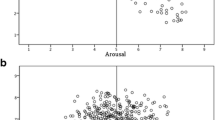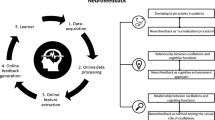Abstract
The aim of this research was to investigate the variations of P50 auditory sensory gating (P50) in normal healthy adults and the first onset schizophrenics. By using the American Nicolet Bravo electromyography/evoked potential (EMG/EP) system, P50 was measured with conditioning-testing paradigm (paired-click stimuli S1 and S2 were used) in 58 first onset schizophrenics and 108 healthy adults, and the Positive and Negative Syndrome Scale (PANSS) was applied. The following three conclusions have been reached. (1) In normal control (NC) group, measured from central, anterior and posterior zone (Cz, Fz and Pz respectively), there were no statistical differences (P > 0.05) between S1 and S2 evoked P50 peak latencies (S1-P50 and S2-P50); the amplitudes of S2-P50 [(2.2 ± 1.4), (2.3 ± 1.5) and (2.1 ± 1.4) μV respectively] reduced significantly as compared with S1-P50 [(5.6 ± 3.3), (5.6 ± 3.9) and (4.9 ± 2.8) μV respectively] (P < 0.01); the S2/S1 ration, S1-S2 difference, and 100 (1-S2/S1) had no statistical differences (P > 0.05). (2) Compared with NC, the schizophrenic group significantly showed lower S1-P50 amplitudes (P < 0.01, except at Pz in which Z = 2.030, P = 0.042), higher S2-P50 amplitudes, higher S2/S1 ratio, lower S1-S2 difference, and more decreased 100 (1-S2/S1) (P < 0.01) at Cz, Fz and Pz. (3) No significant correlations were found among S2/S1 ratio, S1-S2, 100 (1-S2/S1) of sensory gating and PANSS (P > 0.05) in schizophrenic group. The first onset schizophrenics had sensory gating deficits, which could be quantified by P50.
Similar content being viewed by others
References
Wang H X. Progress in Studies on P50 sensory gating study. Linchuang Shenjing Dianshenglixue Za Zhi, 2002, 11(1): 53–56 (in Chinese)
Wang H X, Chen X S, Bai P S. Application of P50 sensory gating in schizophrenic study. Zhonghua Jing Shen Ke Za Zhi, 2002, 35(2): 125–128 (in Chinese)
Wang H X, Chen X S, Zhang M D, Lou F Y. Study on auditory evoked potential P50 in normal adults: A quantitative test for brain inhibitory function. Zhenduanxue Lilun Yu Shijian Za Zhi, 2004, 3(2): 101–105 (in Chinese)
American Psychiatric Association. Diagnostic and Statistical Manual of Mental Disorders. 4th ed. Washington: American Psychiatric Press, 1994, 273–292
Picton T W, Bentin S, Berg P, Donchin E, Hillyard S A, Johnson R Jr, Miller G A, Ritter W, Ruchkin D S, Rugg M D, Taylor M J. Guidelines for the using human event-related potentials to study cognition: Recording standards and publication criteria. Psychophysiology, 2000, 37(2): 127–152
Adler L E, Cawthra E M, Donovan K A, Harris J G, Nagamoto H T, Olincy A, Waldo M C. Improved P50 auditory gating with ondansetron in medicated schizophrenia patients. Am J Psychiatry, 2005, 162(2): 386–388
Hetrick W P, Sandman C A, Bunney W E Jr, Jin Y, Potkin S G, White M H. Gender differences in gating of the auditory evoked potential in normal subjects. Biol Psychiatry, 1996, 39(1): 51–58
Adler L E, Olincy A, Cawthra E M, McRae K A, Harris J G, Nagamoto H T, Waldo M C, Hall M H, Bowles A, Woodward L, Ross R G, Freedman R. Varied effects of atypical neuroleptics on P50 auditory gating in schizophrenia patients. Am J Psychiatry, 2004, 161(10): 1,822–1,828
Adler L E, Freedman R, Ross R G, Olincy A, Waldo M C. Elementary phenotypes in the neurobiological and genetic study of schizophrenia. Biol Psychiatry, 1999, 46(1): 8–18
Light G A, Braff D L. Do self-reports of perceptual anomalies reflect gating deficits in schizophrenia patients? Biol Psychiatry, 2000, 47(5): 463–467
Boutros N N, Belger A. Midlatency evoked potentials attenuation and augmentation reflect different aspects of sensory gating. Biol Psychiatry, 1999, 45(7): 917–922
Oranje B, van Berckel B N M, Kemner C, van Ree J M, Kahn R S, Verbaten M N. P50 suppression and prepulse inhibition of the startle reflex in humans: A correlational study. Biol Psychiatry, 1999, 45(7): 883–890
Wang H X, Chen X S, Zhang M D. Assessment for sensorimotor gating and prepulse inhibition of the startle reflex in schizophrenia. Zhonghua Jing Shen Ke Za Zhi, 2005, 38(1): 55–58 (in Chinese)
Andreasen N C, Arndt S, Swayze V II, Cizadlo T, Flaum M, O’Leary D, Ehrhardt J C, Yuh W T. Thalamic abnormalities in schizophrenia visualized through magnetic resonance image averaging. Science, 1994, 266(5183): 294–298
Author information
Authors and Affiliations
Corresponding author
Additional information
__________
Translated from Chinese Journal of Psychiatry, 2006, 39(2): 65–68 [译自: 中华精神科杂志]
Rights and permissions
About this article
Cite this article
Wang, H., Zhang, M., Chen, X. et al. P50 auditory sensory gating in first onset schizophrenics and normal healthy adults. Front. Med. China 1, 429–432 (2007). https://doi.org/10.1007/s11684-007-0084-5
Published:
Issue Date:
DOI: https://doi.org/10.1007/s11684-007-0084-5




